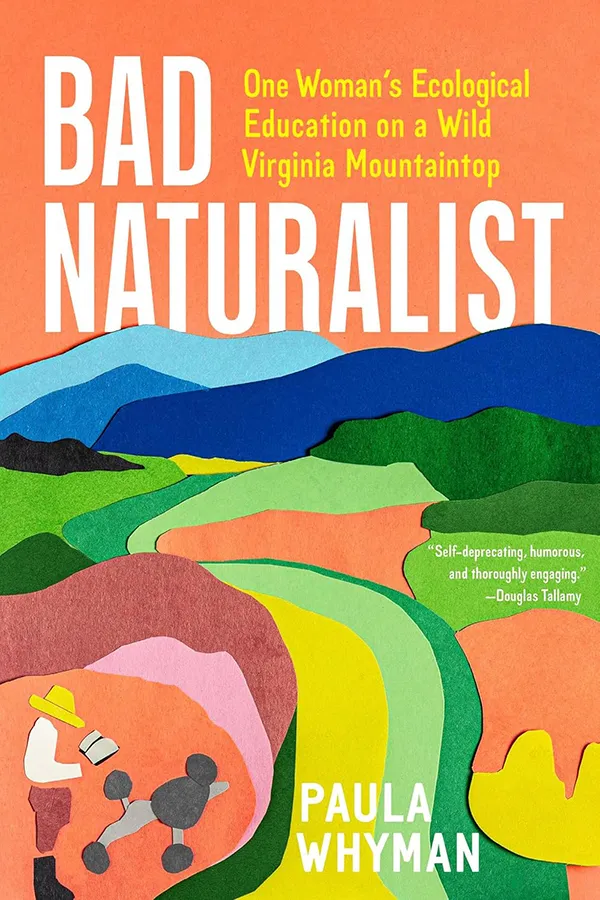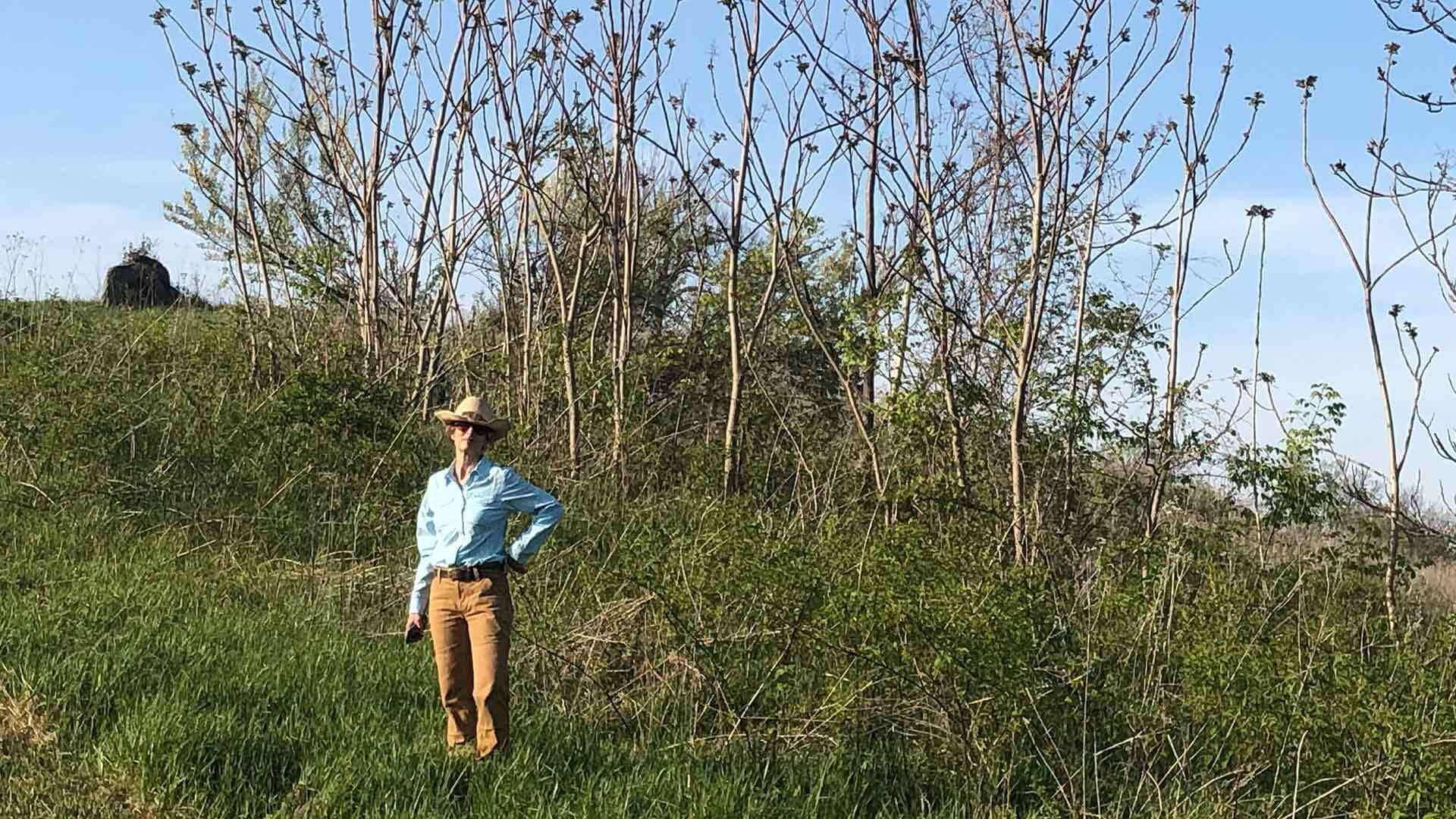- February 03, 2025
- By Sala Levin ’10
Those who know and love Paula Whyman ’87 may have been skeptical about her well-meaning endeavors in the natural world. The perennials she planted in her suburban Maryland backyard failed to return for a second year. The fledgling robin she tried to save from a heat wave expired before she could even get it to an animal shelter. The frogs she and her children attempted to raise died after refusing to eat the crickets Whyman released into their terrarium.
But those thwarted forays into flora and fauna didn’t deter Whyman. In August 2020, after decades of sporadic searching for a home in the Virginia countryside, she and her husband purchased more than just a patch for some vegetable gardening. They bought 200 acres on a peak in the Blue Ridge Mountains, where Whyman undertook the daunting task of clearing invasive plants and encouraging native plant life on this long gone-to-seed cow pasture and orchard—an experiment she’s written about in her new book, “Bad Naturalist: One Woman’s Ecological Education on a Wild Virginia Mountaintop,” released by Hachette’s Timber Press last month.
“I thought, ‘This is a really exciting possibility, despite the fact that I didn’t know much about plants or how to proceed with making an old hayfield into a native meadow,’” she said.

Whyman had long harbored a love of the outdoors. As a child in Maryland, her parents grew exotic plants like Chinese silvergrass and a mimosa tree in their yard. (Now, Whyman knows those plants were invasive.) “I spent a lot of time letting insects crawl on me, digging for bugs, watching bees and ants under a magnifying glass,” she said. She became a junior farmer at Wheaton Regional Park’s Old MacDonald Farm, where she took care of chickens, sheep and goats.
After graduating from the University of Maryland with a degree in English, Whyman worked for years as an editor and freelance writer before going back to school at American University, where she earned an MFA in literature. While there, she created an independent study to work one-on-one with a biology professor and gain foundational knowledge in conservation biology.
Whyman was inspired in her quest by the 2019 book “Wilding,” in which British author Isabella Tree tells the story of returning her farmland to an untamed state. Now, on her Virginia mountaintop, Whyman is working to tip the balance to native plants, especially in the 75 acres of open meadow atop the mountain. There, invasives like Japanese stiltgrass and spotted knapweed competed for space and resources with native species like little bluestem, milkweed, and prairie rose.
“What if I could return this mountaintop to its natural glory?” Whyman writes. “It would serve as a living example of how to restore native meadows! Pollinators would come from all around! I pictured sheep grazing on one of the hillsides.”
Working with experts from the Smithsonian Conservation Biology Institute and the Natural Resources Conservation Service, Whyman encountered a bushel of challenges. The prolific autumn olive bush, which emits nitrogen into the soil that can create toxic algal blooms in streams and rivers, kept popping up in new places. Thorny bramble quickly took over acres of fields. And the suffocating vine known as mile-a-minute for its ability to invade new territory sunk its leafy teeth throughout the property.
She also learned the nitty-gritty of land restoration: the critical role played by prescribed burns, the near impossibility of eradicating invasive plants, the inherent imprecision of conservation efforts.
“I thought there would be one right answer: Here’s what you should do,” she said. “And people did give me guidance and say, ‘We think the best approach is X.’ And then someone else might say, ‘Well, I think the best approach is Y.’ And someone else would say, ‘It could be Z.’ That was really eye-opening—the idea that it’s a science and it’s also kind of an art.”
In “Bad Naturalist,” Whyman “complicates traditional conceptions of nature and belonging,” wrote Publishers Weekly. “The result is an enchanting complement to Isabella Tree’s ‘Wilding.’”
Today, Whyman and her husband spend about 85% of their time at their mountaintop home. Now she is turning her attention to this year’s burns and deer management. She still hopes to raise a small flock of sheep.
“I hope readers will come away with a feeling of hopefulness, that they’ll be inspired to look more closely at the natural world where they live,” she said. “If you’re in the city, maybe you’ll see birds on a ledge, or plants growing along a sidewalk. Just ask questions, because attention breeds action.”
